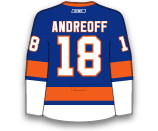Kase played pretty well during his first career call-up, scoring one goal on five shots in five games while playing 10:44 ATOI. He returns to the Phantoms, who has three goals and three assists (six points) in 21 games this season.
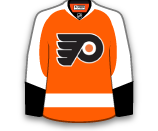
Kase played pretty well during his first career call-up, scoring one goal on five shots in five games while playing 10:44 ATOI. He returns to the Phantoms, who has three goals and three assists (six points) in 21 games this season.

Gibbons played in two games during his most recent call-up but returns to the AHL ahead of the Christmas break. His demotion also suggests that Erik Haula could be back Saturday vs. the Panthers.
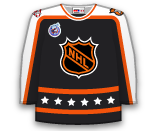
Carlsson has scored one goal with eight assists (nine points) in 28 games with the Monsters this season. The former first-round pick (No.29 overall in 2015)has appeared in 17 career NHL games to-date and gets his first call-up of the season with Andrew Peeke (broken finger) going on IR.
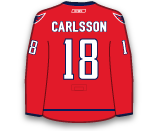
Joseph started the season at a decent pace, posting seven points (4G / 3A) while playing 12:36 ATOI in his first 21 games but has no points and a minus-4 rating while playing just 9:43 ATOI in his last 10. He'll go back to Syracuse to get his game back in order, which means that Mitchell Stephens will remain with the Lightning and play on the fourth line on Thursday.

Czarnik has been squeezed out in Calgary but they catch a break with him clearing waivers on Thursday. He returns to the AHL, where he has three points (1G / 2A) in three games this year.

Harkins was a second-round pick (No.47 overall) in 2015 and has played in 156 AHL games since. This year the 22-year-old winger leads the Manitoba Moose with 31 points (7G / 24A) in 30 games. He could make his NHL debut before the Christmas break with Mathieu Perreault and Andrew Copp both going on IR on Wednesday.

Appleton was recently assigned to Manitoba after returning to full health but was called up on Wednesday with Andrew Copp going on IR. Appleton has one assist in four AHL games and no points in nine NHL games this season. He is expected to skate on the third line with Adam Lowry and Gabriel Bourque on Thursday.

Gross has four goals and 11 assists (15 points) in 26 AHL games this season. He will likely sit as a reserve defenseman during his time with the Coyotes unless they run into injury trouble.

Russo was called up over a week ago but sat as a reserve defenseman for four games. He swaps spots with Jordan Gross so that Russo doesn't sit for too long. The 26-year-old has eight points (1G / 7A) in 23 AHL games this season.
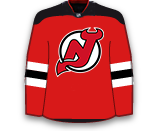
Mathew played 10:47 TOI Sunday in Chicago but was a healthy scratch in Vegas on Tuesday. He heads back to Iowa, where he is second on the team with 20 points (14G / 6A) in 22 games.

Sherwood missed the last 17 games with an oblique tear but is ready to return to game action and will do so in the AHL. The 22-year-old has three goals and one assist in 10 games with the Monsters this season.
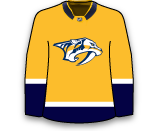
Trevor Moore will not play on Tuesday after taking a bump in practice on Monday. Brooks could make his NHL debut tonight but Dmytro Timashov is also available to take Moore's spot.

With Antti Raanta sick, Hill will come up and serve as Darcy Kuemper’s backup in San Jose.

With Nikita Kucherov questionable to play on Tuesday, Stephens comes back up and could play vs. the Senators. Stephens failed to record a point in four games with Tampa Bay but has 10 points (5G / 5A) in 24 AHL games.

Lashoff comes up to replace Jonathan Ericsson () on the roster. Lashoff has appeared in just 10 NHL games over the last three years and has six points (2G / 4A) in 25 AHL games this season.
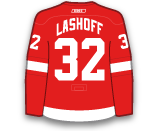
Moving Howard provides the Red Wings with some salary-cap relief and making it retroactive to November 27th means he can return this week. Howard is expected to start with the Griffins on Tuesday night and could return to the Red Wings if he doesn't suffer a setback.
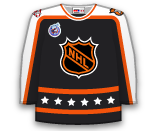
Cormier served as Mackenzie Blackwood's backup during his time with the Devils and returns to the AHL, where he has gone 1-5-1 with a 3.77 GAA and .884 SV% in seven games.

Senn has gone 5-5-2 with a 2.95 GAA and .896 SV% in 13 AHL games this season. The 23-year-old netminder will likely serve as Mackenzie Blackwood's backup Wednesday vs. the Ducks.
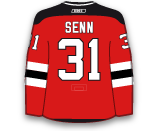
Twarynski played Sunday in Winnipeg but swaps spots with Andy Andreoff and goes back to Lehigh Valley. The 22-year-old has two goals and one assist in 12 AHL games this season.
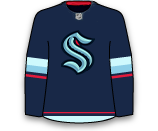
The Flyers are dealing with injuries upfront so they have a lot of Phantoms on the roster right now and Andreoff is the latest to get called-up. Andreoff has one assist in six games with the Flyers and eight points (4G / 4A) in 14 AHL games this season.
